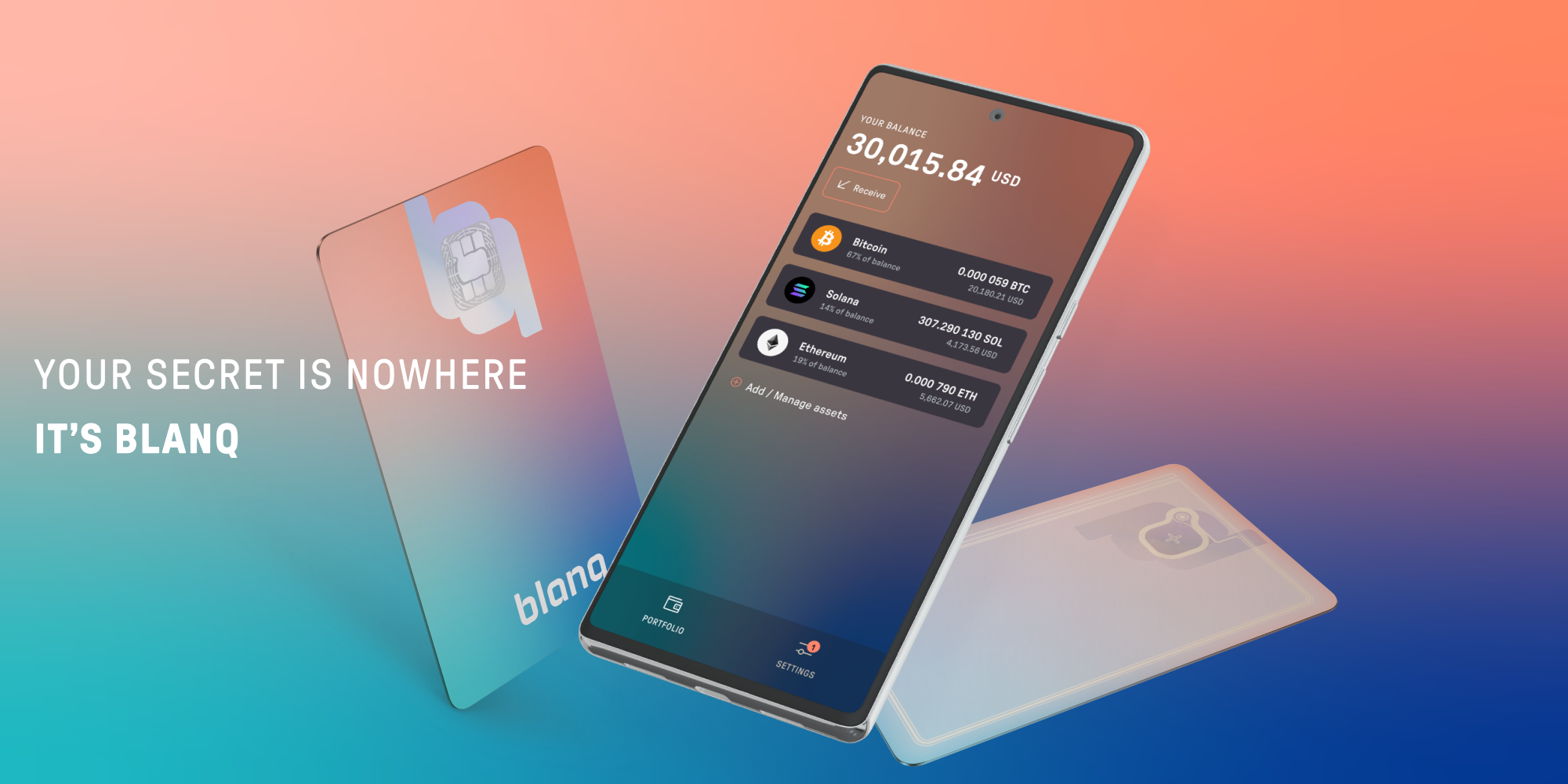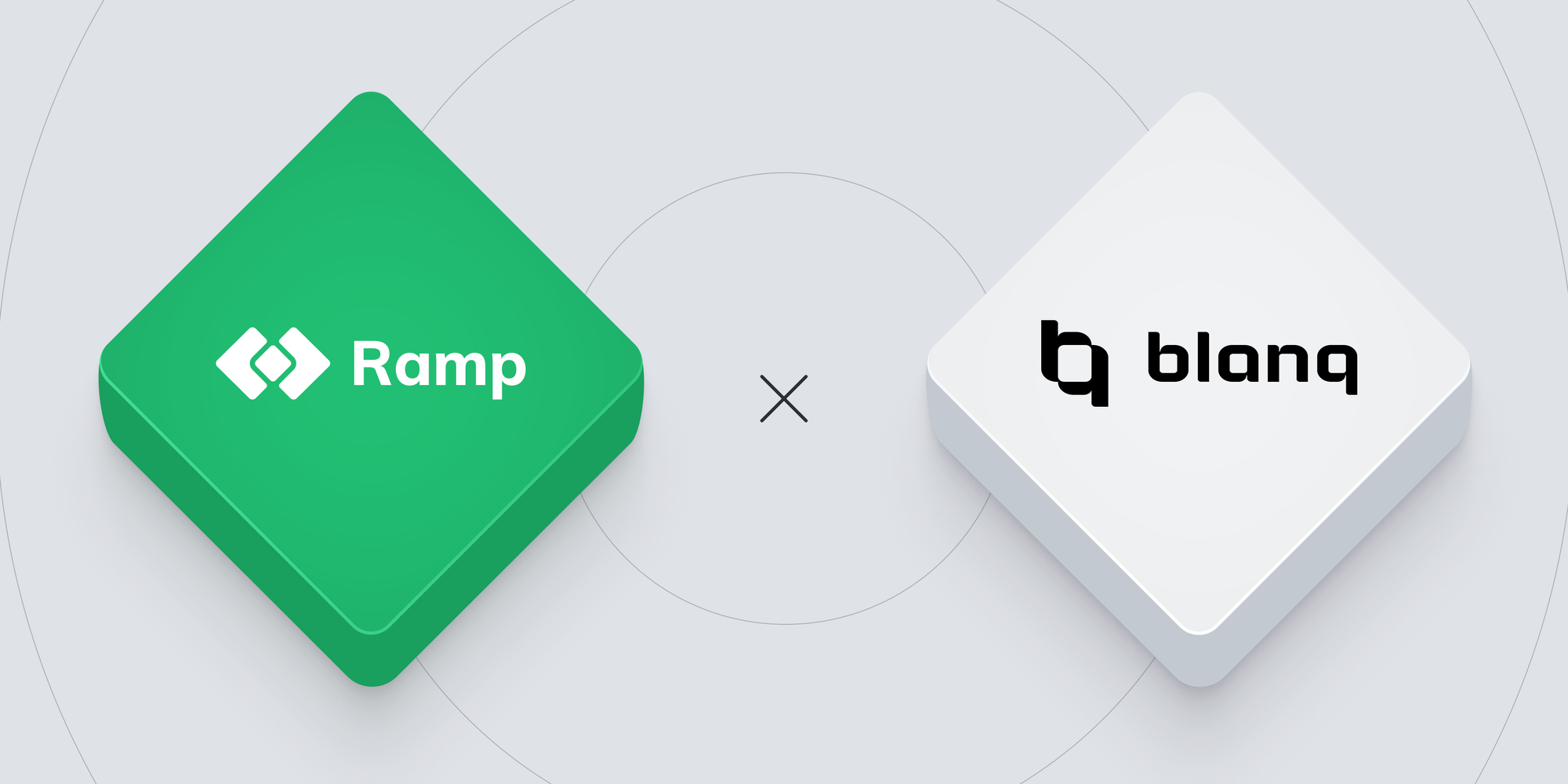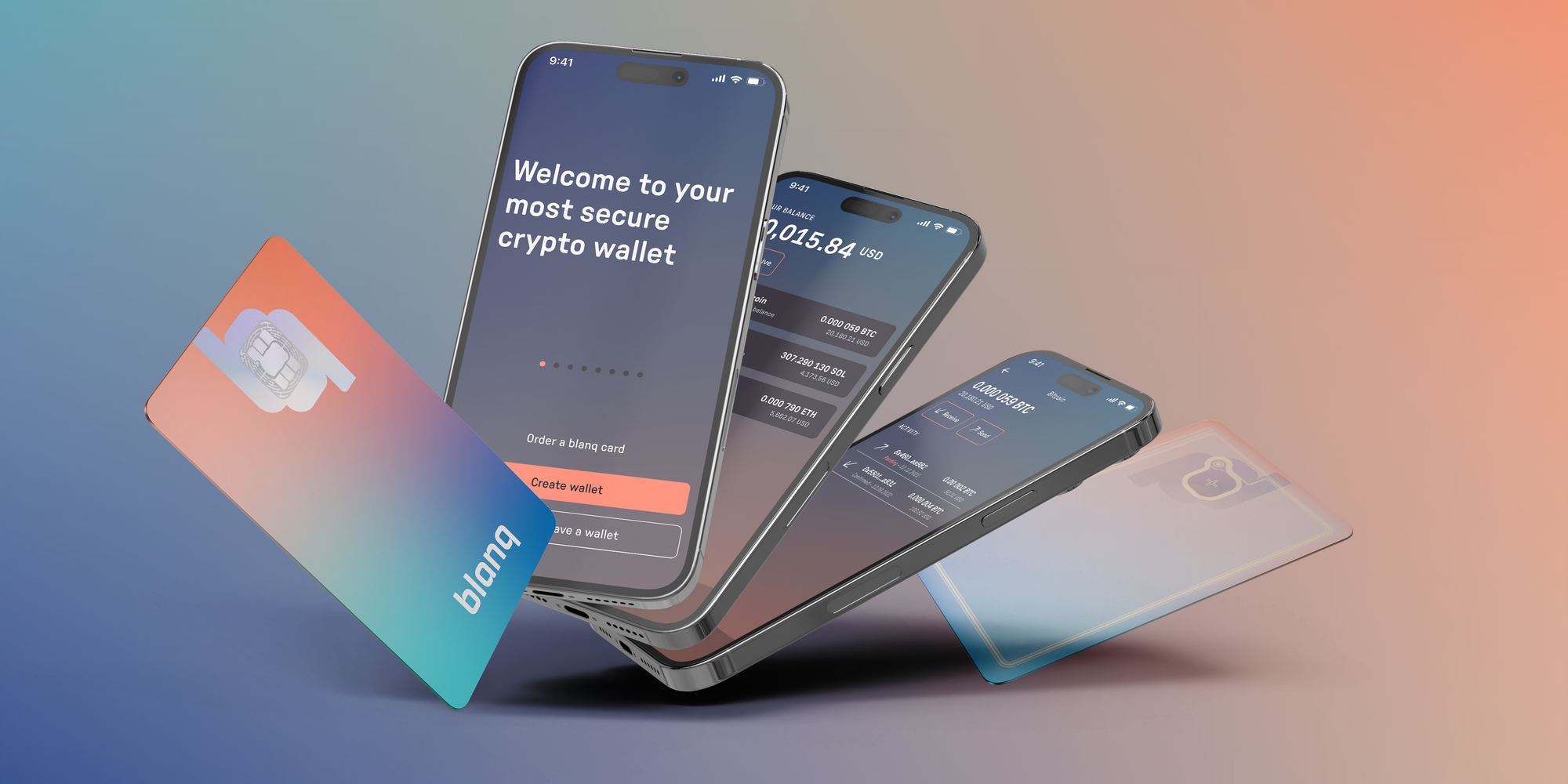Meet The Team - Founder & CEO Hakim Raja



Q&A with Founder & CEO, Hakim Raja
Hello Hakim,
Happy to chat with you today! How are you?
All good, thanks for asking - We're bustling with activity at Blanq Labs in the final stretch before going live! It's an incredibly exciting time!

Can you tell us a bit about your background?
I was born in Bengaluru, India, and from an early age, I would tinker around with nuts and bolts at my father's hardware store, showing an early penchant for making stuff.
This passion has led me to companies where I was involved in creating futuristic technologies such as gesture recognition and cybernetic clothing like Project Soli and Project Jacquard at Google, part of the Advanced Technology and Projects group or today as the Founder of Blanq, a new Hybrid Crypto Wallet that offers best of both worlds, the security of a hardware wallet, the versatility of a hot wallet.
Even though I was always attracted by "making stuff", Business was something I was following closely. As a graduate of Standford, I ended up taking the bare minimum courses required in electrical engineering to graduate with a master's degree. Instead, I spent most of my time taking courses in computer science, design, and business. The Stanford years transformed me from a technology and domain-focussed engineer into a product, user-focussed engineer.
Could you tell us about the inspiration behind creating Blanq? What motivated you to start this project and address the needs of cryptocurrency users?
I got acquainted with the world of blockchain back in 2014. Being a technologist, the fascination obviously began with the enabling technology and evolving protocols. Creating wallets, learning about public-key cryptography was fascinating to the geek in me but the security and usability implications would only become clear when I started really investing in crypto five years later, in 2019.
As the popular adage in the crypto world goes “Invest only what you are comfortable losing”, I understood the risks but being someone obsessed with wanting to figure out how things work, I couldn’t let uninformed decisions be the main source of that risk. One such risk was ‘how do you hold crypto securely’?
Like most of us, I too came up with my own security tricks and hacks. However, deep down I knew I was just sitting on a time-bomb awaiting an impending disaster. I also found myself managing wallets on behalf of family and friends, many of them artists excited by the NFT communities but completely overwhelmed with the whole process. Bear in mind that these are young people who otherwise have no problems using technology and apps. At this point, while my conviction for decentralized systems only grew, my realization that infrastructure is still very barebones and uninviting became more than obvious.
Security is a top concern in the crypto space. How does Blanq ensure the safety of users' digital assets, and what unique security features set it apart from other wallets?
Security is often and mistakenly assessed in isolation - not taking into account the implications of the user responsibilities imposed and the eventual lapses. A perfect system needs to simultaneously address both of these equally important concerns:
- Security: Never allow access to an intruder
- Reliability: Always allow access for the owner
While it may seem obvious, in reality, most systems, including hardware wallets, obsess over security to a degree that they aggressively tradeoff, if not ignore, reliability. As an analogy, you could put 10 padlocks on your main door and feel it is more secure but now you would just need to lose 1 of those 10 keys to be locked out yourself, increasing the chance of that happening 10-fold.
‘Never’ and ‘Always’ in the above specification would translate to 0% and 100% probability, mathematically speaking. However, in practical systems, we can only try and push them as close to those limits as possible.
While it would be easy to engineer different variations of wallets by trading off a little bit of security for more reliability or vice-versa, we asked ourselves how could we improve them both and improve them significantly?
Blanq’s distributed-key architecture provides 100,000x more security and 100x more reliability than a traditional wallet.
User experience plays a crucial role in the adoption of crypto wallets. How does Blanq balance security with usability? Can you highlight some key features that make it accessible to all users?
Usability is of paramount importance. Even the highly secure and reliable system we discussed previously would be of very little value if the user experience is gnarly and inconvenient. 9 times out of 10, the average user is going to pick convenience over best-practice.
Blanq has distilled and optimized the core cryptographic functionality to run on a processor embedded in a card you can carry around easily in your pocket, just like your bank chip cards. No additional devices to learn, lug around and fiddle with tiny buttons and screens. No seed phrases to jot down on paper, or relying on weak security of pins, passwords, and email magic-links. All user interaction is via an intuitive mobile app and secure authorizations are via biometric authentication and the tap of the card, just like your bank NFC cards!
Recovery is as straight forward as getting a new card and activating it via your app, just as with your bank cards. But unlike a bank, your assets at no point are in custody of a third-party including Blanq.
In essence, you can carry around your Blanq wallet without hassle and worry and, thanks to the traditional banks, you already know how to use the Blanq card.
Blanq is often described as a hybrid wallet. Could you explain the concept behind this and how it combines the benefits of both hot and cold wallets for users?
The decentralized nature of the blockchain renders transactions irreversible, unlike those in traditional finance. The very concept of ‘hot’ and ‘cold’ wallets was invented to highlight the trade-offs that are assumed to be inherent in the context of decentralized transactions. A cold wallet, most likely a clunky and inconvenient system, is meant to provide advanced security for your keys in an environment that provides limited access to malicious software or actors to snoop and steal. On the other hand, a hot wallet is meant to provide quick and ready access to your assets wherever and whenever, but may be more vulnerable to key compromise.
Blanq challenges this assumed trade-off by shrinking the secure environment into a smart-card you can conveniently carry around while the distributed-key security architecture relieves you from the worry of compromising your assets in the event of the loss of your card or your phone.
Managing keys protected by seed-phrases and passwords can be challenging for many users. How does Blanq simplify the process of key management and account recovery?
A wallet derives your signing keys that protect multiple accounts on all your blockchains. from one long random password (the seed-phrase). This seed-phrase is required if you need to recover your wallet, say, on a new device. Saving it as plain-text makes it highly vulnerable and so a terrible idea. Saving it encrypted with a simpler and memorable password is pretty much as bad. Typically crypto wallets resort to dumping that responsibility on the user asking them to write it down on paper and store it “somewhere safe”.
When we interview users, many reveal that they emailed it to themselves or saved a screenshot to their photo album. Some come up with seemingly secure hacks - eg. breaking up into two sets of 6 words stored in two different places. What they don’t understand is that a loss of one-half reveals enough information that not only doubles the chances of compromise but actually makes it 2^64 (or 18 quintillion times) more probable.
Blanq’s distributed-key protocol provides a robust way to manage this seed without either dumping the responsibility on the user or assuming the risk on device or server security. It achieves this by breaking up the seed into secure “shares” with a threshold scheme, say 3-of-5. What this means is that compromising any less than the 3 “shares” does not reveal ANY clue about the seed but losing up to 2 “shares” still allows you to easily recover using the remaining 3 shares.
And most importantly, all this cryptographic jugglery is wrapped in a super straight-forward and familiar user experience - biometric authentication on the device and tap of the card.
Can you share any upcoming developments or features that users can look forward to in Blanq? Are there plans to support additional cryptocurrencies or integrate with new blockchain technologies?
Blanq wallet is built ground-up with a chain-agnostic design with a modular and upgradeable design that allows us to quickly add support for multiple L1 and L2 chains. We will be adding support for more blockchains very rapidly, based on user demand.
Making asset custody secure, reliable, and easy is only one part of the story. Users also need tools and technology to protect usage, so as to not fall prey to scams. Privacy of their blockchain activity is also of immense value. Stay tuned for exciting announcements on these fronts and make sure to join our early access program here !

